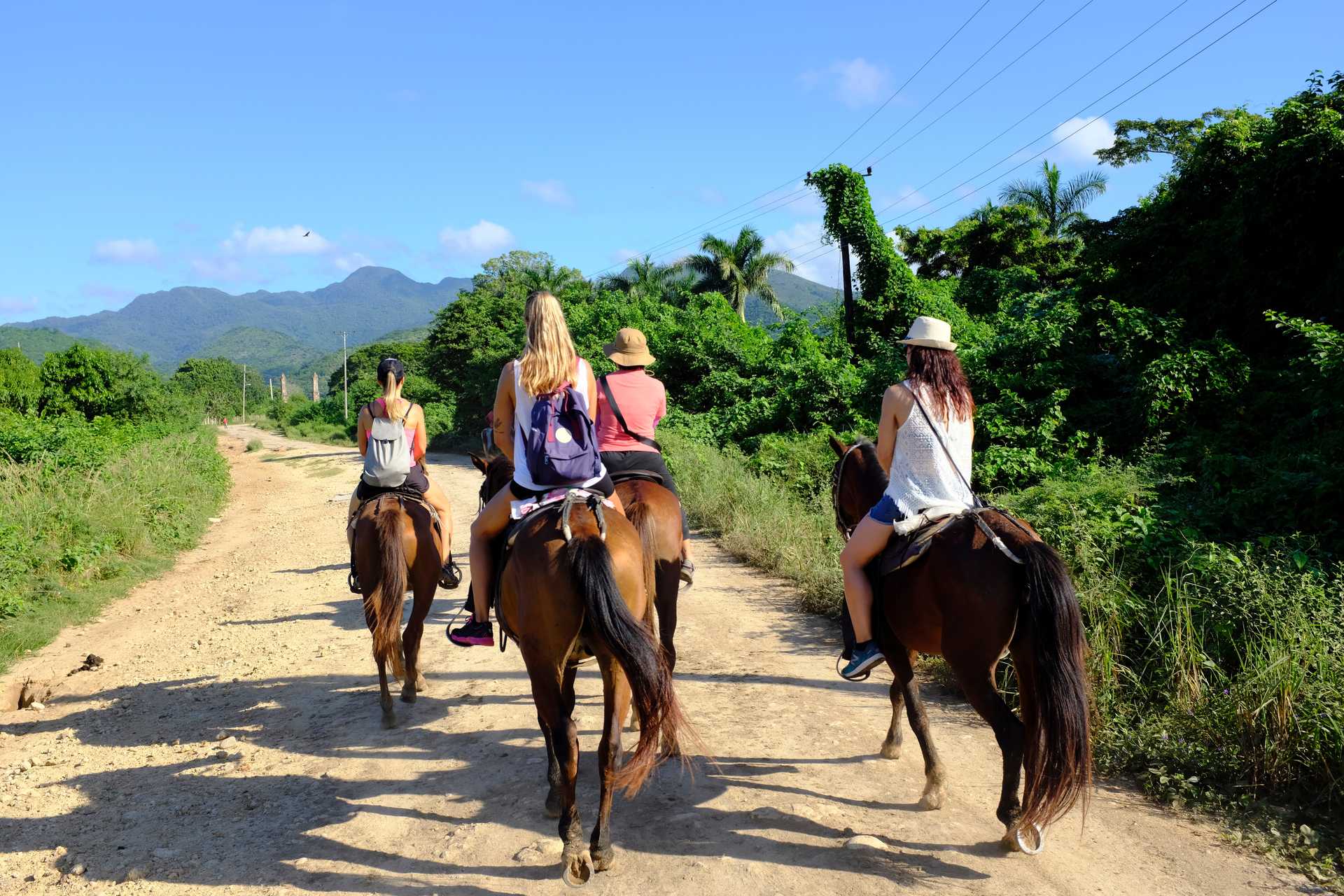Our equipment recommendations for Cuba
Basic Equipment

Waterproof duffle bag:
To carry your main gear we recommend using a 110-120L duffle bag.

Daypack:
You will need to carry your own daypack. 30-40L is sufficient. We recommend Osprey daypacks.

Sleeping bag:
You will need a light sleeping bag (with a rating of 10 degrees) and compression sack. We recommend Mountain Hardwear or The North Face sleeping bags.

Trekking poles:
Trekking poles can reduce the impact on your joints by up to 20%. They are great for travelling up and down steep, jungle paths! We recommend adjustable Black Diamond trekking poles

Water bottles:
Capacity to carry at least 2 litres of water. Wide-mouthed Nalgene bottles are durable and a good size.
Head

Sun hat:
Preferably wide-brimmed for protection, and with a neck cover for sun protection

Sunglasses:
Choose a pair of high UV protection glasses. Julbo are a great mountain sunglass brand but any brand with high UV protection will suffice

Headlamp:
You will need a headlamp with good light output for any late night toilet journeys. Petzl make market-leading and affordable headlamps
Hands and Feet

Socks:
3-4 pairs of thick, trekking socks and 2-3 pairs of thin socks. Merino wool is the best material and Bridgedale or Smartwool make good trekking socks

Training shoes:
To wear on your different activities we recommend bringing a pair of training shoes or sandals

Trekking boots:
We recommend using a mid-weight trekking boots with good ankle support. Recommended brands include: Salomon, Scarpa, Hi-Tec and Merrell

Gaiters:
Help keep your trousers clean in wet and muddy or dusty conditions.
Upper Body

Thermal base layer:
1 x thermal base layer, ideally made from merino wool. No cotton. Recommended brand is Icebreaker

Long sleeved shirt:
Go for a light or medium weight, moisture wicking long sleeve shirt (x2). Icebreaker, Berghaus and Under Armour make great breathable trekking shirts.

Fleece or Soft shell jacket:
A mid-weight fleece jacket is ideal for cool nights. Berghaus, Helly Hansen and The North Face all make great fleeces

Hard shell outer jacket:
A water/windproof hard shell outer jacket to protect you from the elements. Goretex material is best. Recommended brands include The North Face, Arc'teryx, Berghaus and Mountain Hardwear

Swimming costume or shorts
This will be necessary for your water based activities on Cuba Discovery.
Legs

Trekking trousers:
Light or medium weight (x1) trekking trousers. Convertible trousers are an option. Recommended brands include Craghoppers and Columbia

Trekking shorts:
Light or medium weight (x1) trekking shorts. Recommended brands include Craghoppers and Columbia

Hard shell trousers:
To protect yourself from the elements you need a good pair of waterproof / windproof hard shell trousers. Ideally Goretex. Patagonia, The North Face and Arc'teryx make good outer trousers
Odds and Sods

Toothbrush and toothpaste:
Ideally travel size

Wet wipes and hand sanitizer:
Staying clean on your treks can be challenging. Wet wipes and hand sanitizer are a huge help

Personal medicines and medical kit:
We recommend bringing Paracetamol and Imodium at a minimum

Ear plugs:
For light sleepers. Snoring can be pretty bad in camp

Personal snacks:
Boiled sweets, nuts, energy bars and dried fruit are all a good shout

Dry bag:
Only required if your main duffle bag or rucksack is not waterproof. Sturdy rubble sacks will also help to keep your kit dry on our kayaking adventure.

Camera and spare batteries:
Unless you are a keen photographer we recommend taking a good quality and lightweight point and shoot camera like the Panasonic Lumix.

Plug adapter:
A plug adapter for charging your devices in the hotels. Most of Cuba has a 110V electricity supply although the newer hotels will use 220V. You will need a Type C plug adapter, this is the one with two rounded pins commonly used in Europe.











